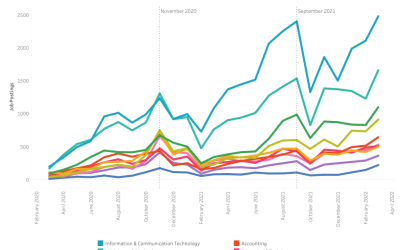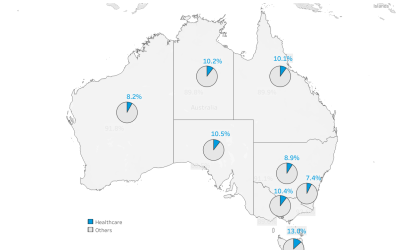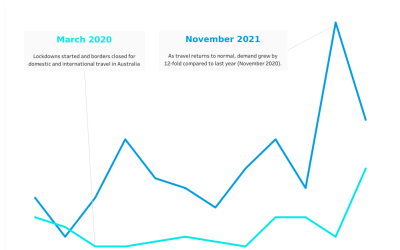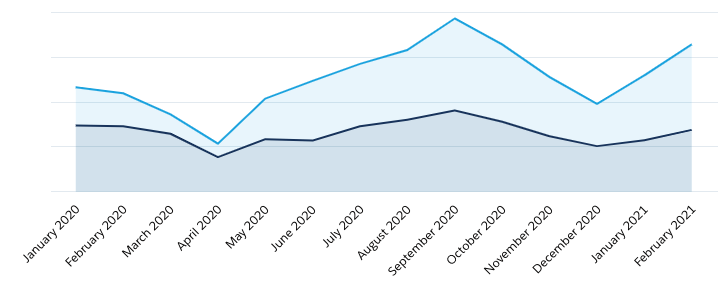
What This Means for Recruiters:
“as the economy picks up…
employers will go back to recruiters to help them fill positions.”
This past year was one with a lot of tragedy. But it also is one that brought a lot of new information that businesses and organisations can use to better understand what opportunities there may be in the future.
One of the most fascinating components of the past year is the way that it highlighted how many organisations operate during times of chaos. This is especially true of the link between economic disaster and the approach to hiring new staff members. When our team at Web Rover looked at the data, what we noticed was something especially fascinating:
2019 Employer v Recruiter Trend
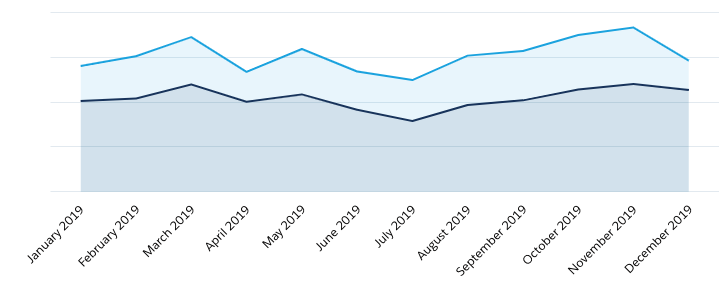
2020 Employer v Recruiter Trend

Take a look at the 2019 recruiter vs in house trends. Using our Web Rover app, we were able to filter out the jobs that were posted by employers, and the ones that were posted by recruiters. What we see is that, in an almost perfectly consistent line, about 40% of all jobs are posted by recruiters, and 60% of all jobs are posted by the employers themselves. This number is extremely consistent, never going lower than 57% to 43% or higher than 61% to 39%.
It’s a number that also goes back years with the same level of consistency. Employers still use their own in-house methods over recruiters at about a 3:2 rate during times of relative economic normalcy.
But then take a look at 2020 and 2021, starting at March when the pandemic first hit Australia. These numbers diverge, and they diverge hard. For the first two months of 2020, we see this exact same 3:2 (1.5:1) rate.
But then the pandemic hits. For March and April, they actually converge slightly (more on that in a moment) but by the time we reach May, the numbers could not be more starkly different. May, June, July, and continuing onward all the way until today, employers use their own in house recruitment as much as 70% of the time, while recruiters are used only about 30% of the time.
That change may not seem significant, but it is a difference of almost 200% of what it was pre-pandemic. The average during this time period from 2020 to today was 65% to 35%, but even that is misleading as they are brought down by January to April of 2020. From May until this past February, employers are hiring at 7:3 rate (2.6:1), and are choosing to run things in-house far more than recruiters.
Rather watch than read? Hear from our Founder on Rover’s findings…
What Happened? Why the Sudden Change?
During times of economic chaos, the data indicates – both as a result of the decrease in job postings and the choice in who manages them – that employers decided to take recruitment into their own hands as a way to save money.
Recruiters are outstanding at finding useful talent, but they can also be expensive, and when there are situations with considerable economic uncertainty, it is likely that employers decided that one of the easiest ways to save money would be to cut down on recruitment costs and do more of the hiring in-house.
Even though we’re (hopefully) nearing the tail end of this economic drop, it seems as though many employers have, at the moment, decided to continue that trend. Not only does it provide cost savings, but it offers:
-
More control over the postings and who is hired.
-
A way to utilise existing infrastructure during the pandemic.
-
A way to adjust to the “new normal”, of remote work in many occupations.
It’s unclear why exactly employers appear to continue to be relying on their own in-house recruitment efforts, but it is clear that this trend hasn’t shown signs of slowing down yet.
This also explains March and April’s ever-so-slight convergence – and we mean “slight” as the difference was only one or two percentage points, but it was still interesting to see. When the pandemic first hit, some employers likely tightened their wallets and were less likely to hire new staff. But those same employers were very likely to have already had contracts with recruiters in the works for some much needed positions.
So, at least temporarily, they stopped hiring on their own but allowed their recruiters to finish off their contracts and post the open positions. Once those positions were posted, they took back hiring into their own hands. If you look at the total positions open in March 2020 compared to March 2019, we see a total decrease in job postings by about 17%, and this drop combined with some likely ongoing recruitment contracts could easily explain the brief period of recruiters being used more often than in prior years.
In order to determine if this is the reason for the divergence, the best thing to do is look back at prior years and see if there was ever another time when these paths separated like this, and while 2009 to 2019 was fairly consistent, we do see another instance of employers taking more recruitment into their own hands: 2008, at the beginning of the economic crisis, helping confirm that in times of economic chaos, employers take matters into their own hands.
What Else Could It Be?
At the moment, this is simply a conjecture based on the way the data is trending, and it is possible that the cause of this change may be something more complex – or possibly a range of different factors that may all have played a role in the employers taking on more of their own hiring practices. For example, it could be that:
-
Employers felt they did’t need recruiters due to increased job seekers.
-
Recruiting companies were struggling, and may not have been available.
-
Client loss meant that the infrastructure to manage hiring was available.
-
The companies that use recruiters were the ones not hiring during the pandemic.
-
Companies may have offered lower pay, and know that didn’t fit recruiter goals.
The most likely cause of this change is employers looking to save money, but that’s what makes data beautiful is that there is always the potential for other explanations, and the more you look into the data, the more you can learn.
What This Means for Recruiters and Employers
There’s a reason that people put so much faith in recruitment companies: the work they do is invaluable, and the talent they are able to find and manage is second to none. It is likely that, as the economy picks up and businesses get busy again, they’ll go back to turning to recruiters to help them fill the increasingly more difficult positions.
But if you are a recruiter, what this means is that all of these companies are going to both:
-
Be looking for or open to a new recruitment agency.
-
Be looking for a recruitment company that offers a competitive advantage.
While it’s true that some employers are going to go back to their old recruitment companies, others are going to be more open to finding a new recruitment partner. Those recruitment organisations that know the most about which companies are hiring and are able to provide the best possible service for their clients are going to be the ones that are best able to use this change as an opportunity, and set themselves up for a great 2022 and beyond.
Learn more about how Web Rover can help assist you with your recruitment efforts by contacting our team today.
